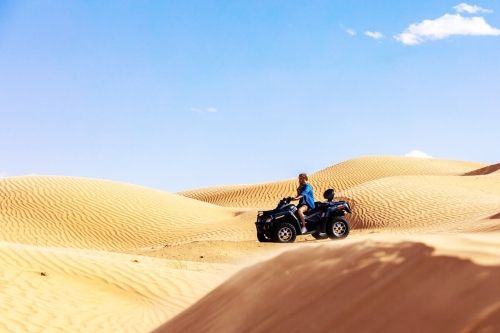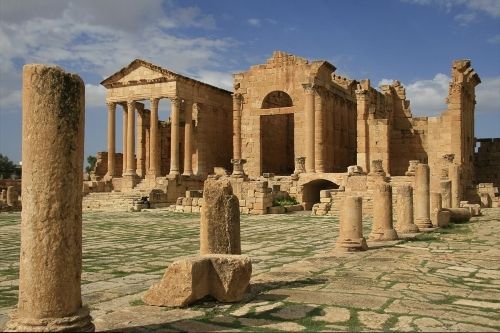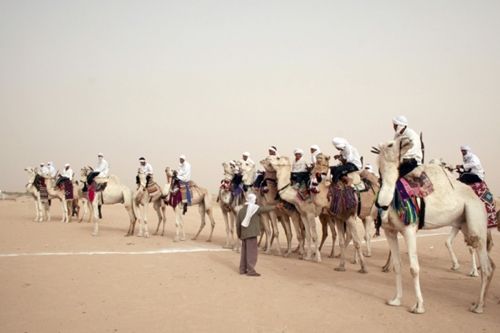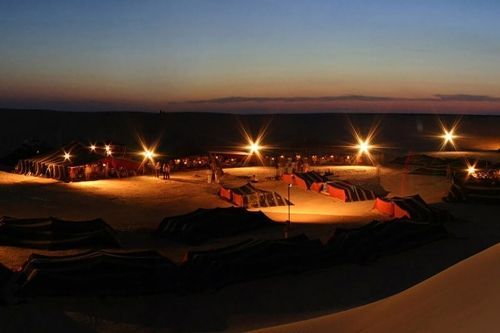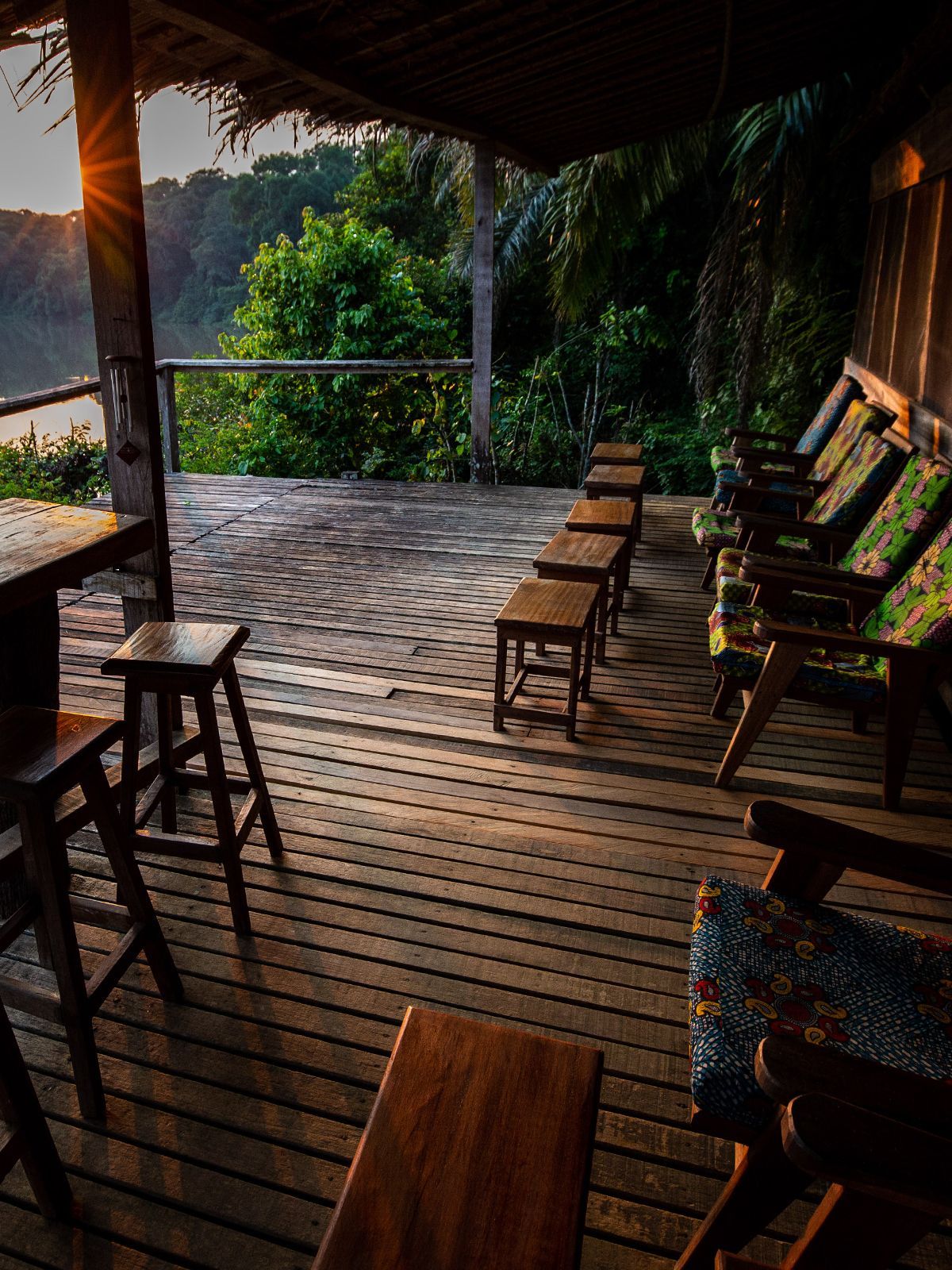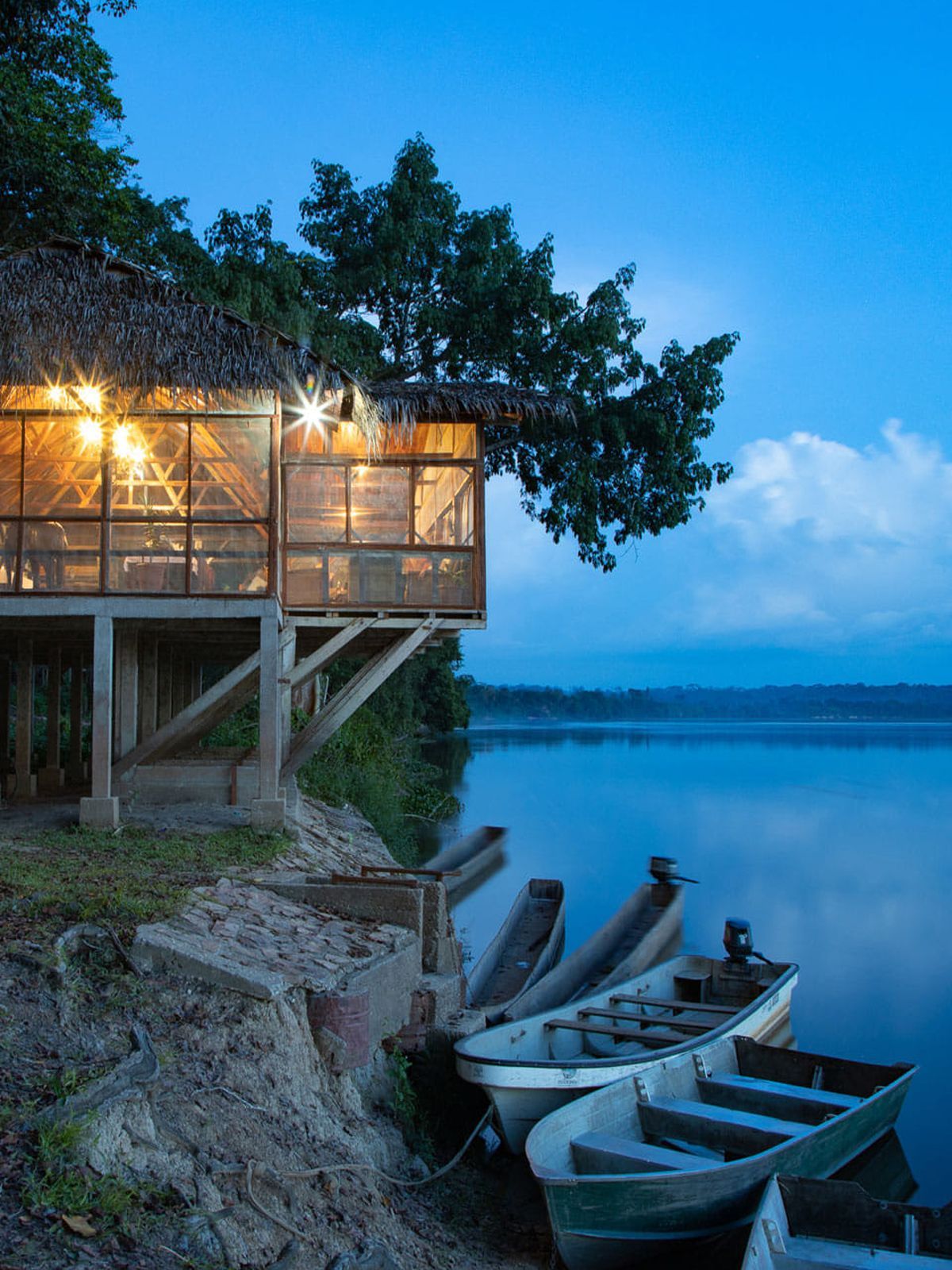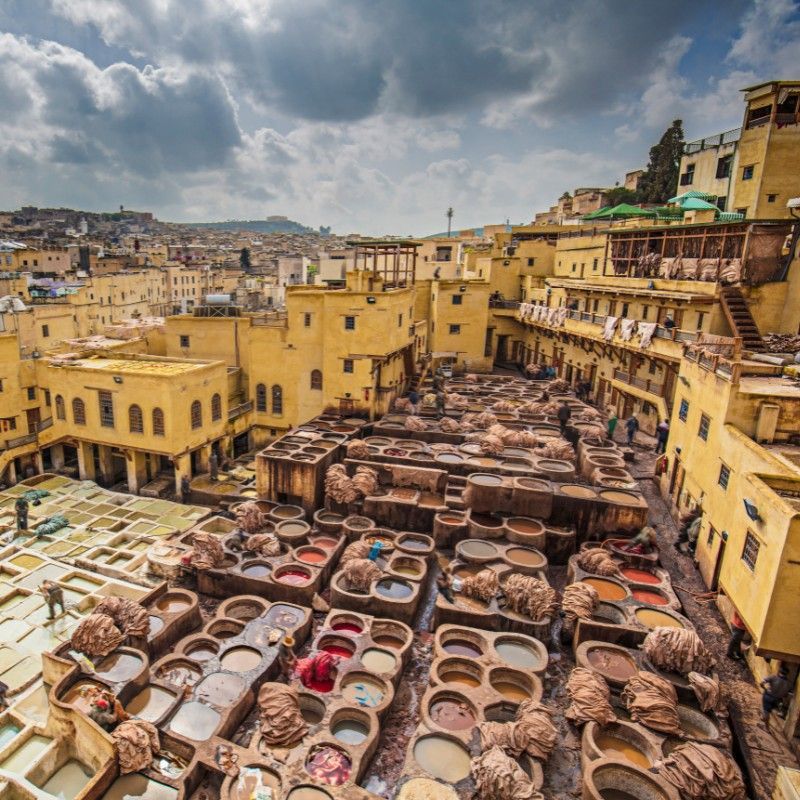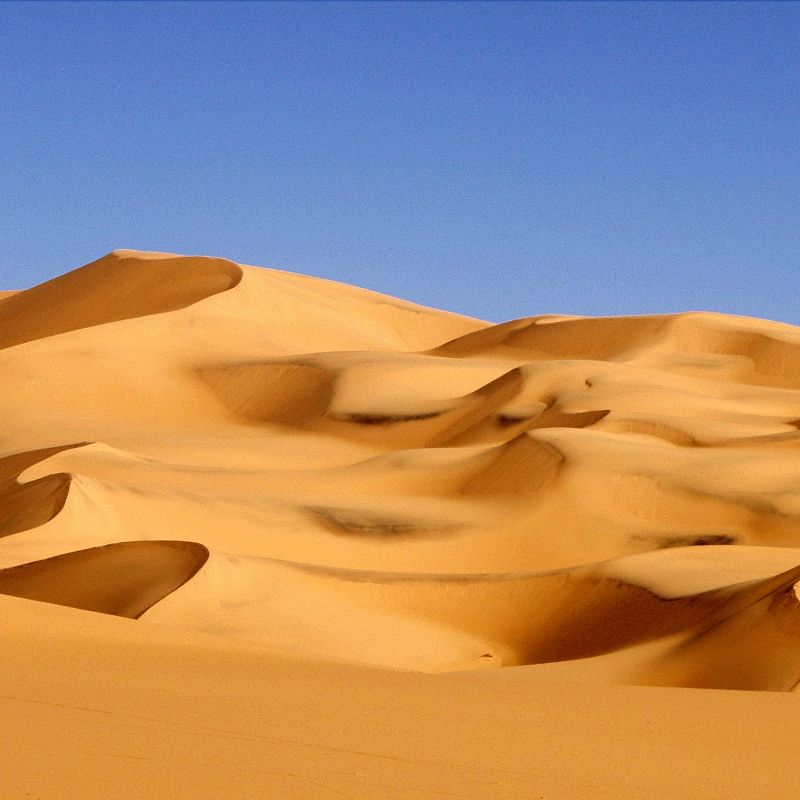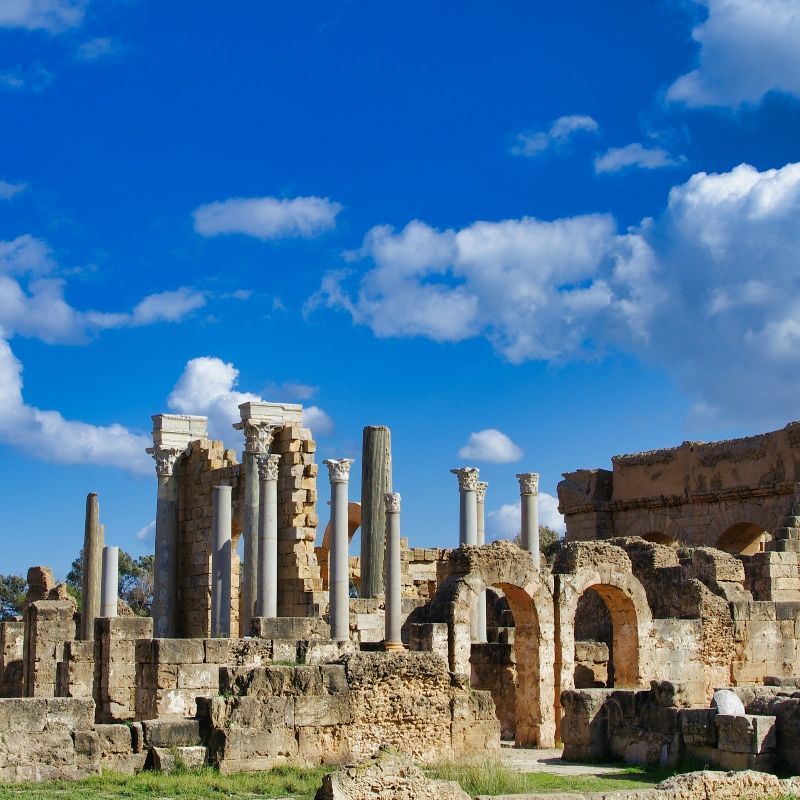Work in Progress ... Page Under Construction
Travel to Tunisia
Tunisia, located in North Africa between Algeria and Libya, offers a mix of historical landmarks, coastal towns, desert regions, and cultural traditions. The capital, Tunis, combines modern elements with an old city center. Its Medina, a UNESCO World Heritage Site, holds mosques, souks, and historic buildings. Nearby, the Bardo Museum houses Roman mosaics and artifacts from across Tunisia’s past. Along the coast, the ancient city of Carthage reveals ruins from Phoenician and Roman civilizations, including the Antonine Baths and Byrsa Hill.
A short distance away, the town of Sidi Bou Said sits above the Mediterranean, known for its distinct blue-and-white buildings and traditional design. Inland, Kairouan holds religious significance and is home to the Great Mosque and a medina lined with local shops and Islamic architecture. Further south, towns like Tozeur and Nefta serve as gateways to the Sahara, offering access to desert oases, date palm groves, and salt flats like Chott el Jerid.
In the southern region, Matmata features troglodyte dwellings—underground homes designed to adapt to the desert climate. Some of these were used as filming locations for popular science fiction films. Off the southeastern coast lies the island of Djerba, known for its markets, traditional houses, and the El Ghriba Synagogue, an important Jewish site.
Roman influence is visible throughout Tunisia, particularly in the ruins of Dougga and Bulla Regia in the north, as well as the amphitheater in El Jem. These sites offer a look into urban planning and architectural techniques of the Roman Empire, with Dougga situated on a hillside and Bulla Regia notable for its underground homes.
Traveling in Tunisia connects cities, small towns, and historical landmarks through a network of roads, railways, and domestic flights. With a combination of coastal, desert, and cultural settings, Tunisia offers opportunities for historical exploration, local encounters, and varied landscapes within a relatively compact area.
Start planning your tailor-made safari holiday
Must Visit in Tunisia
Tunisia, the land of coastal cities, ancient ruins, desert oases, and historic medinas.
A compelling mix of heritage, tradition, and diverse landscapes!
Tunis & Carthage
Tunisia’s capital, Tunis, combines modern energy with historic depth. Wander the UNESCO-listed Medina and explore the Bardo Museum’s Roman mosaics. Nearby, Carthage’s ancient ruins tell the story of Phoenician power and Roman imperial reach along the coast.
Sidi Bou Said
Perched above the Mediterranean sea, Sidi Bou Said charms visitors with its blue-and-white architecture, narrow lanes, and seaside views. This coastal town offers a slower pace, artistic heritage, and a tranquil contrast to the bustle of nearby Tunis.
Kairouan
Kairouan is Tunisia’s religious heart, home to the Great Mosque and centuries of Islamic scholarship. Its medina reveals traditional crafts, quiet courtyards, and a spiritual atmosphere that reflects the city’s role in shaping North African Islamic culture.
El Jem
The massive Roman amphitheater of El Jem rises dramatically from the surrounding plain. It's preserved arches and underground chambers showcase Tunisia’s Roman past and offer insight into the region’s ancient role as a center of trade and spectacle.
Dougga & Bulla Regia
These Roman-era sites offer two perspectives on life under empire: Dougga’s hilltop ruins reveal public life, with a theater and temples; Bulla Regia’s underground homes demonstrate local adaptation, designed to stay cool in Tunisia’s summer heat.
Tozeur & Nefta
Located near the edge of the Sahara, Tozeur and Nefta are oasis towns arising from the desert and pressed against vast palm groves. Explore traditional brickwork, visit the mountain oases nearby, and experience the slower rhythm of life in the desert south.
Matmata
A small Berber speaking town in southern Tunisia, Matmata’s troglodyte homes are carved into the earth, shaped by centuries of Berber ingenuity. Still inhabited today, these dwellings illustrate desert adaptation and have gained fame as filming locations for science fiction movies.
Chott el Jerid (also spelled Sciott Gerid and Shott el Jerid)
This salt lake stretches across Tunisia’s southern plains, creating shimmering mirages and cracked, surreal surfaces. Especially striking at sunrise or sunset, Chott el Jerid adds a dreamlike quality to the journey through Tunisia’s desert regions.
Djerba (also Jerba or Jarbah)
Off Tunisia’s southeastern coast, Djerba mixes sandy shores with a rich cultural legacy. The island features traditional villages, markets, and the El Ghriba Synagogue, reflecting a long history of coexistence between Jewish, Berber, and Arab communities.
The Sahara
Tunisia’s Sahara invites exploration by 4x4 or camel, offering rolling dunes, remote ksour, and star-filled skies. Experience traditional desert life, visit centuries-old Berber settlements, and encounter the vast silence that defines it´s southernmost reaches.
Tunisia in Video
Nothing documents a destination better than a short video and Tunisia's blend of history, culture, and natural beauty are illustrated well in this one.
Take a look at our Inspiration Africa YouTube Channel where you will find many travel related videos about Africa; don't forget to SUBSCRIBE to be kept up to date with new posts.
Must Do in Tunisia
Each destination offers its own experiences and here are some "must do" activities to experience in Tunisia!
Best Time to visit Tunisia
The best times to visit Tunisia are during spring (March to May) and autumn (September to early November), when the weather is mild and pleasant across most regions.
Spring brings blooming landscapes and comfortable temperatures, ideal for exploring historic sites, oases, and the coast. Autumn offers similar conditions, with warm seas and fewer crowds, making it great for beach visits and cultural experiences.
Summer (June to August) can be very hot, especially in the interior and southern desert areas, though coastal resorts remain popular during this period.
Winter (December to February) is cooler and wetter in the north, but still mild compared to much of Europe, and suitable for city tours and archaeological sites.
For desert adventures or visiting places like the Sahara, Tozeur, or Matmata, cooler months between October and April are most comfortable. Each season offers a different perspective on Tunisia’s diverse landscapes and cultural heritage.
Receive our travel inspirations in your mailbox
Tunisia Travel Tips
By default, since we only work on a tailor-made basis, each of our travel projects will always be accompanied by our travel tips on the destinations to be visited. These will of course be adapted to the type of trip envisaged and the reality of the activities and places visited. If you would like general travel advice for Tunisia, please don't hesitate to contact us via the "contact us" button.
Where to Stay in Tunisia
Tunisia offers a wide range of places to stay, from boutique hotels in restored medinas and beachfront resorts to desert lodges near oases and
guesthouses in historic towns.
Our mission is to help you select what you like best. While inviting you to explore new options.
Tunisia Combines Well With
Tunisia combines well with several neighboring and nearby countries,
offering diverse regional experiences within one trip.



